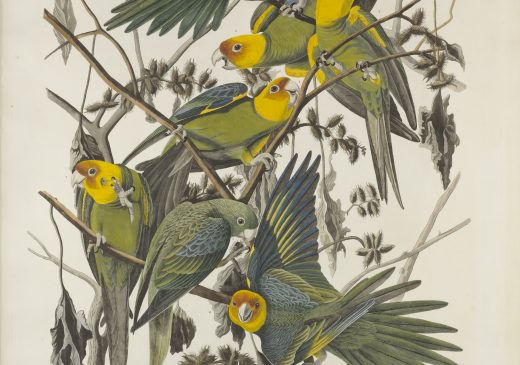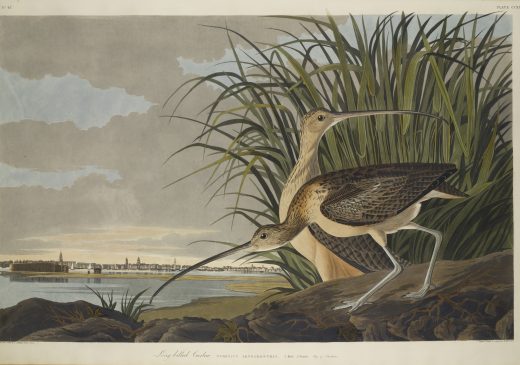John James Audubon was a largely self-taught arist-naturalist whose intent was clearly scientific. His passionate involvement lifted his visual interpretation beyond mere literal transcription. Sharing the reverence for nature of his contemporaries, the Hudson River School painters, Audubon broke away from the tradition of isolating birds in stiff profile. In his stunning watercolor studies, he concerned himself with the distinguishing characteristics of shape, plumage, and habit.
John James Audubon (born Jean-Jacques Rabin, April 26, 1785 – January 27, 1851) was a French-American self-trained artist, naturalist, and ornithologist. His combined interests in art and ornithology turned into a plan to make a complete pictorial record of all the bird species of North America. He was notable for his extensive studies documenting all types of American birds and for his detailed illustrations, which depicted the birds in their natural habitats. His major work, a color-plate book titled The Birds of America (1827–1839), is considered one of the finest ornithological works ever completed. Audubon is also known for identifying 25 new species. He is the eponym of the National Audubon Society, and his name adorns a large number of towns, neighborhoods, and streets across the United States. Dozens of scientific names first published by Audubon are still in use by the scientific community. Audubon was accused during his life as well as posthumously of academic fraud, plagiarism, and scientific misconduct; and more recently criticism for involvement in slavery and his racist writings.


